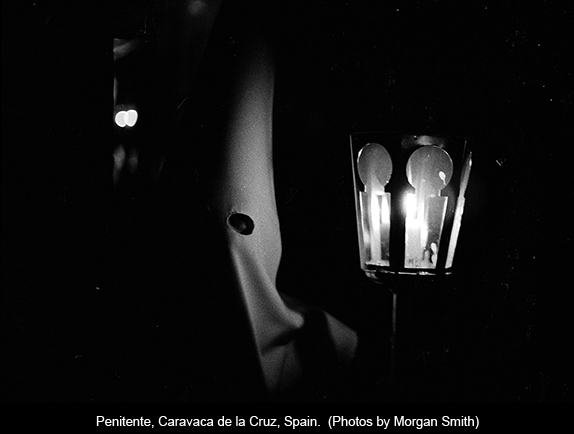
Suddenly the lights go out in the whole town. We’re in pitch black darkness. The crowd is silent. Then with a great creaking sound, the enormous wooden doors of the cathedral slowly open.
We’re in Caravaca de la Cruz, a small town in the little known region of Murcia in southern Spain. It’s midnight and this is our first Semana Santa or Holy Week experience. Frankly, we have no idea what to expect.
Through the huge doors, we can see that a procession has formed in the semi darkness inside the cathedral. Men, wearing black robes and huge, white peaked hats, stand in two lines, holding lanterns. With a start, we realize that the hats make them look like the Ku Klux Klan but this has a very different meaning – penitence. These men are “penitentes.”
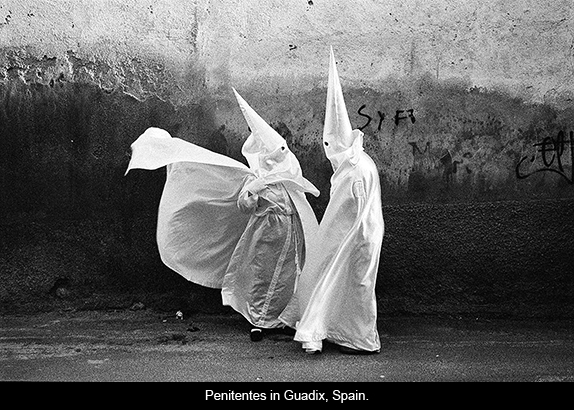
Now the procession slowly exits the cathedral and enters the narrow, dark street. The dense crowd presses against us; the only sound is their breathing. Then we hear a single commanding voice. A huge float or “paso” bearing a statue of Jesus on the cross follows the two columns of “penitents” and moves towards us with a swaying movement. A hooded man precedes it. It is his voice that we hear. He is giving directions to some twenty men who are carrying the ”paso,” hidden under it by the robes that cloak its sides. They groan under its staggering weight. They’re called “costaleros” and because they can’t see anything, have no idea which way the street leads or how to maneuver the narrow corners, they are totally dependent on this man, called a “capataz” He steers them with his voice, by tapping a long pole on the ground or ringing a small metal knocker on the side of the paso.
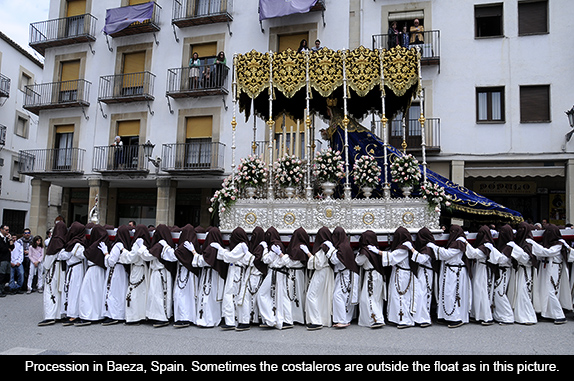
We had only moved to Barcelona a few months earlier and by the time we decided to go to Semana Santa, there wasn’t a hotel room available in all of Andalusia. So we ended up in the little known region of Murcia, staying in a very attractive “casa rural” up a beautiful valley above Caravaca run by an enterprising young man named Pedro Bernal and his fiancée, Elena Sanchez. It turned out to be a miraculous experience.
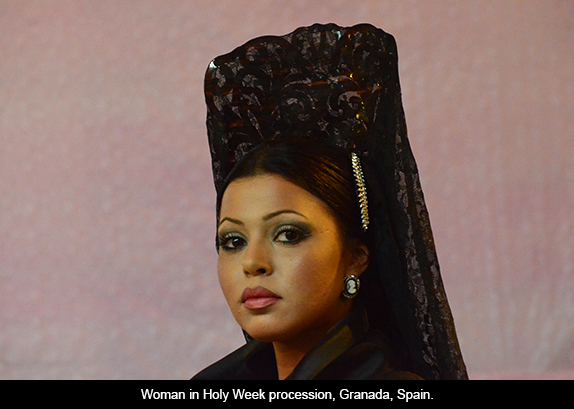
Earlier that evening, we’d wandered into a small but jam packed bar called “Los Pajaritos”. Along the back wall were little cages full of songbirds. The owners, Santos and Maravilla raise these birds and enter them in contests all over Spain. The birds sang happily as the cheerful customers feasted on “pulpo a la gallega” ( octopus Galician style), long green beans that looked like oversized lima beans, local almonds, codfish fried in little dough balls, olives and other treats, all washed down by local wines and draft beer. Then as midnight neared, the crowds surged out of the bars and headed to the cathedral. Semana Santa is not for those who like to go to bed early.
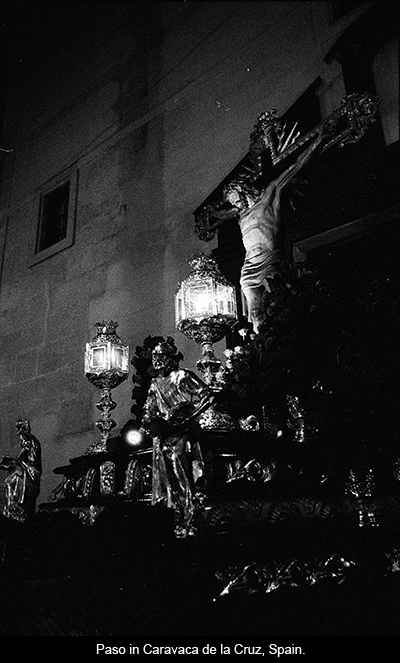
Suddenly a song breaks out. A woman is leaning out of a window, singing what is called a “saeta.” It is a religious lament, sung without any accompaniment. The “paso” stops and there is dead silence except for her deeply moving voice. When she is finished, a roar of cheering comes from the crowd around us. Then there is silence again and the swaying “paso” continues along the narrow street, squeezing past the tightly packed crowd.
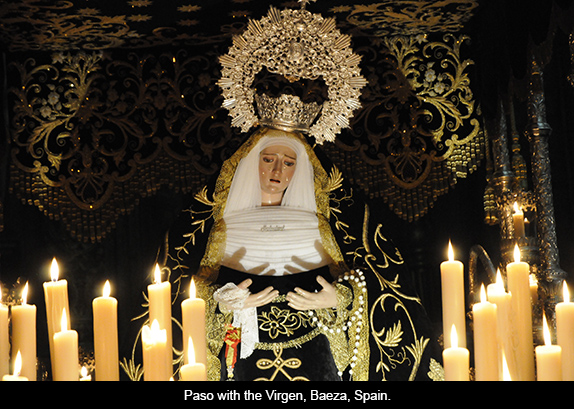
Since that unique Thursday night in 1999, we’ve been to Semana Santa processions all over Spain:
- the somber processions in Valladolid north of Madrid;
- the extraordinary pageants in Lorca with women in lace gowns on purebred white horses, men, women and children dressed as gladiators, Roman soldiers, Marcus Antonio, Cleopatra, Moses, Nero and Julius Caesar;
- Sevilla which most people think is the highlight but I found it way too crowded;
- small towns like Antequera, Baeza, Cieza, Castellar de la Frontera, Archidona, Cañete La Real, Guadix and Ronda where you can visit the churches where the “pasos” are being adorned and mix in with the processions;
- Granada, Spain’s most unique city.
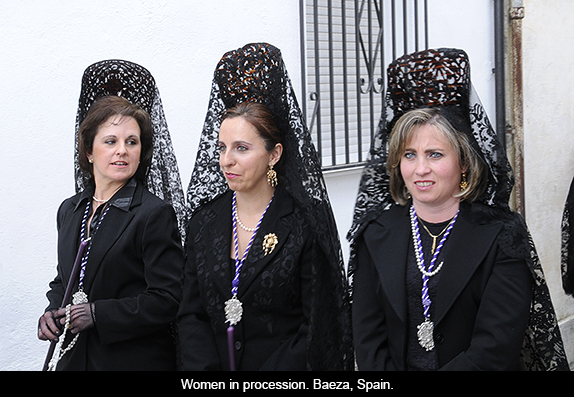
We’re not Catholics, not even church goers but this is a spiritual experience of stunning beauty. I regret that we weren’t able to go this year but we’re already planning for 2015.




Responses to “Semana Santa or Holy Week in Spain”